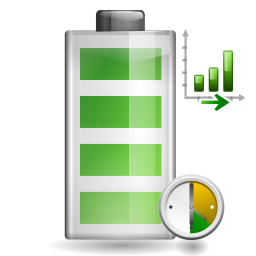
On my laptop, I’m running Fedora 22 which was shipped initially with a Linux 4.0 kernel. It was difficult to get 4h of battery life (3h30 was usually enough to deplete the battery down to 5%). Recently, the kernel was changed to 4.1 and because after 5h working on my laptop I got notified that I still had 10% power I got curious,
Therefore with a fully charged battery, I booted with Fedora 22 Linux kernel 4.0.4-301. I used powertop to measure the battery power usage in Watt in graphical (ex-init 5 level) and multi-user target (ex-init 3 level). I then rebooted using Linux kernel 4.1.3-201 and did the same measurement. I waited each time that the system settled down and that successive measurements where constant. Nothing was running, WiFi was ON and connected (Link Quality=64/70), screen brightness at 30%, Graphical target is using Gnome 3.
| SystemD Target (~init level) | Linux 4.0 (in W) | Linux 4.1 (in W) | Progress |
|---|---|---|---|
| Multi-User (init 3) | 12,8 | 8,66 | -32% |
| Graphical (init 5) | 13,1 | 8,51 | -35% |
Wow! That’s great. And the estimated battery power is now up from 4h to 6h30 with WiFi ON. But with light browsing usage and some Arduino development, I got a bit more than 5h15 without requiring a wall power connection!! That close to 50% more battery life than with earlier kernels.
Where does this come from? I don’t know. There seems to have been a few pull requests about power management for kernel 4,1 but none stroke me as relevant for such a huge improvement, Matthew Garrett has proposed a patch to improve dramatically the power efficiency of Intel’s Haswell and Broadwell CPUs (and I happen to have an Haswell one), so that could have been that patch, but I did not find it in the kernel 4.1 changelog, so I doubt it was yet implemented. So I really don’t know what made change in the kernel bring such an improvement. (note: I’m running Fedora 22 and without software update, just by selecting kernel 4.0 or 4.1 at boot, I can see the difference in power consumption. So this is really a kernel-side improvement).
Did you also witness improvement when switching to Linux kernel 4.1? Let me know using any social media means!
Note to self: telinit is now deprecated in favour of systemd targets. Runlevel 3 can be reached by invoking sudo systemctl isolate multi-user.target and the switch to the “runlevel 5” can be triggered using sudo systemctl isolate graphical.target.


 The nature is getting greener everyday, so why can’t we? I decided to invest a bit of my time solving a
The nature is getting greener everyday, so why can’t we? I decided to invest a bit of my time solving a